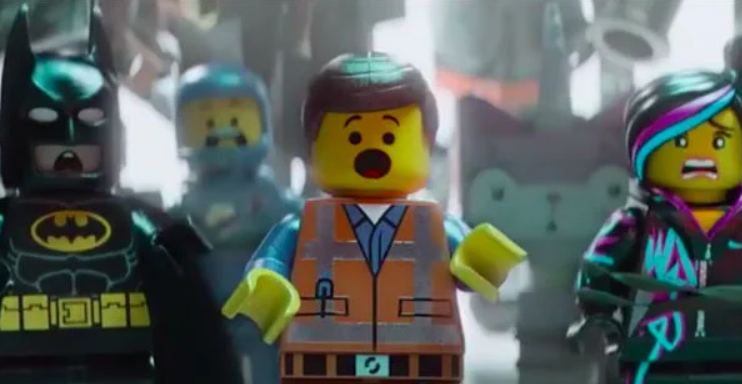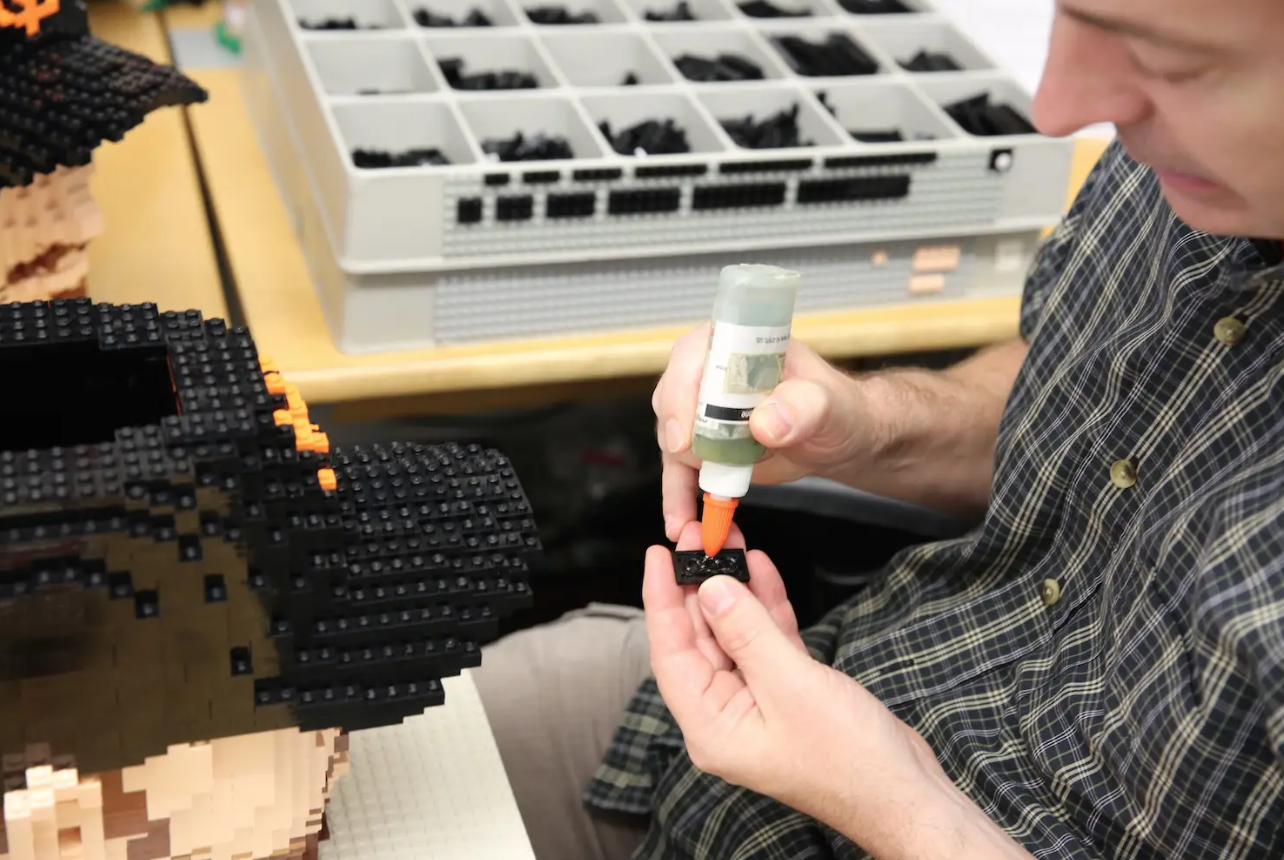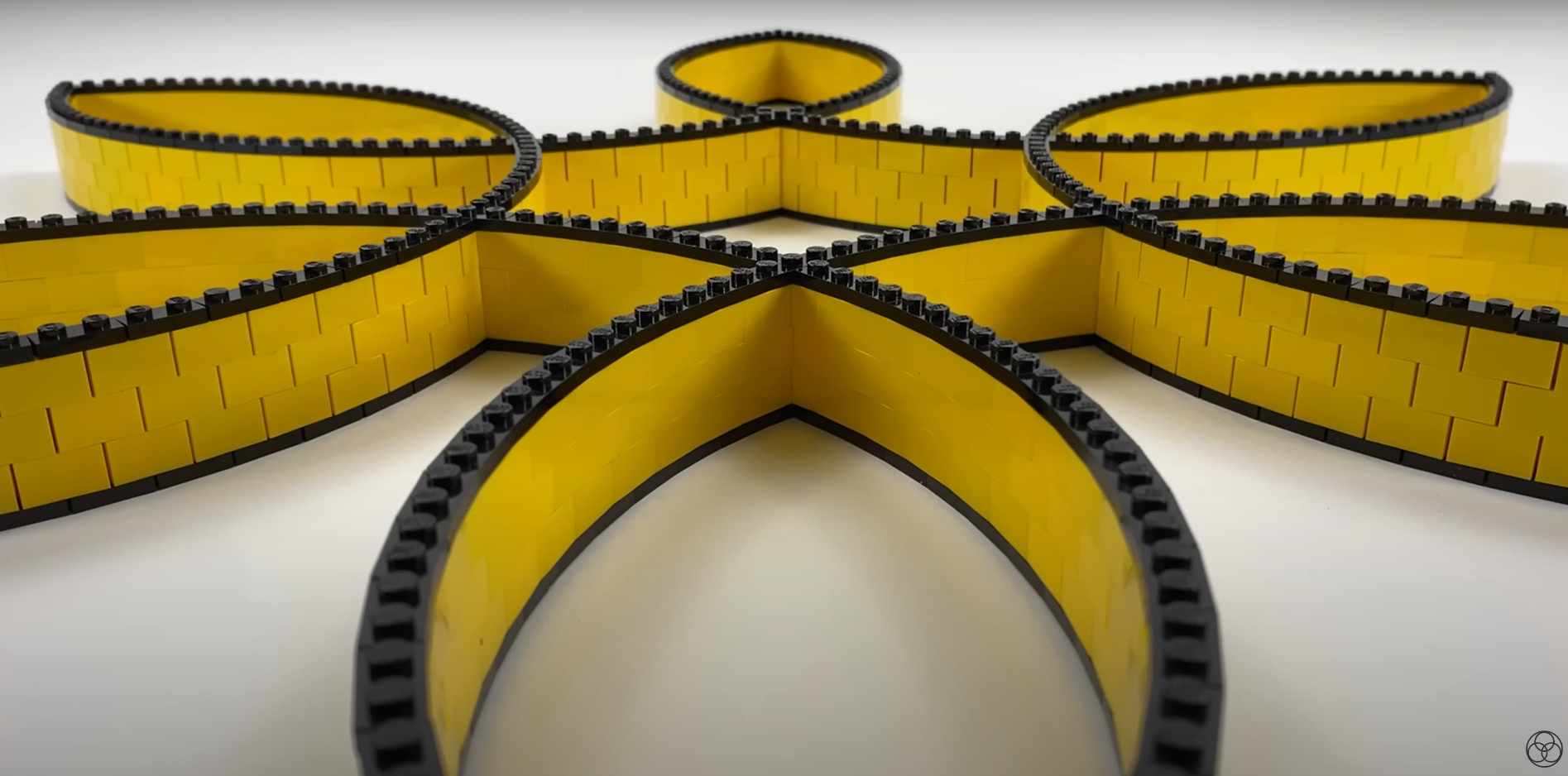The Case Against LEGO Purism
/Impure! Monster! Heretic! There are many terms that can be used when discussing drifters from the pure LEGO crafting code. Today I will be the devil's advocate for LEGO purism to show that we can and should be doing whatever we want with our beloved bricks.
First off, let me start by saying that there is a purist LEGO code. To be very simple, I believe it to be using LEGO pieces only how LEGO Corporate intended their use. In essence, “If I were a LEGO set designer, what would I be allowed to do?”
I am well aware that there is a lot packed into that statement. While I am not a set designer, we can see how that statement could include copyrights, partnerships, regulations, being able to create new elements, piece counts restrictions, or for any of the above, the lack thereof. Fortunately, lots of that stuff does not apply to the vast majority of us AFOLs. What it would condemn to us, however, is the horrific mutilation, adhesion, and twisted use of sacred pieces.
In my building history, I have personally chosen to do all of the above in purposeful ways. But with every choice I try to consider the effect. What is lost and what is gained? You don't want to lose the essence of LEGO by removing all restrictions. That would be like only playing video games with cheat codes. No one, including yourself, will be impressed. In some contexts, it is downright shameful. Likewise, you don't want to build a jigsaw puzzle by smashing the pieces together whether they fit or not. You’ll just end up removing one struggle for another, ruining the set for anyone else, and ending up with an ugly picture anyways. So what if anything, and when, is ok?
The Beauty of LEGO
To answer that question, we need to look at two large essential categories. The first is the beauty of LEGO, and the second includes the sins against the brick. To sit here and write out a full list of either would be impossible no matter how thorough I would seek to be. So, I will make an effort to highlight some critical mentions.
Under the beauty of LEGO, let us consider some of the actual values we don't want to lose or dilute with our choices.
Creativity/Inspiration
MOC from Ian Hou
Everyone ticks differently, that’s part of the beauty of creativity. No one wants to stifle that in the LEGO community. So if you’re inspired to think outside the box on a LEGO venture, give it a go! Initial creativity and inspiration shouldn’t be constantly shrouded in mentally predictive purist judgment. Add that in later if you want. Have some fun, just remember to be objective about your result. We’ve all made some dumb stuff we thought was creatively inspired. But, that’s just part of the cost of playing. So play!
Constraints/Ingenuity
The restrictive engineering aspects of LEGO are awesome! Being told no—by a plastic puzzle you’re trying to conform to a shape—is a huge part of the game. You don't want to cheat yourself out of the experience. Besides, how many of us sat down to build one thing and during the struggle ended up inspired to build something else? Let the pieces speak to you. Sometimes you won’t like what they say, but many times you will.
Motivation/Actualization
When LEGO motivates you, have fun and make it happen! The easiest place to put technical hurdles and purist red tape is between motivation and actualization. “Don’t let perfect be the enemy of good.” - Voltaire
The LEGO Community
Loving people is more important than loving LEGO. The cool part about building with LEGO is that there are times to be by yourself, and there are times to be in the community. In both, it’s important to be mindful of others.
Sins Against the Brick
Now, when looking at the LEGO crimes, we should consider them one at a time in context. Do they worsen or aid the beauty of LEGO and its community and personal building experience or have no effect? Specifically, note that these wrongs are targeted toward a small piece of plastic. Let’s consider some of the top taboos.
Adhesives
I mean, they made an entire LEGO movie about this. “Kragle is bad!” right!? Well, loads of master model builders and artists use acetone or other glues on LEGO. This ranges from reasons like “We can't have this 15-foot T-rex falling on a kid” to “My client, who wants a permanent model, could receive a box of disassembled sadness.” For me in my life, I mostly deal with this:
For loose elements just lightly placed on a model with gravity, I use contact glue. Or I might target key pieces that would make traveling or setting up at a convention a nightmare and take four times longer. To me, that is time I’d rather be spending with the people in the community whom I only get to see once a year. Advising tape or glue in that context isn't there to connect the impossible, but to reinforce real connections and defend against disaster. Purist? No. Pure intentions? Yes!
Photo via Insider: LEGO Master Builders Life Size Sculptures
Cutting
I’m not going to pull up the few instances in LEGO instructions where they show cutting flex tube. Nor will I nitpick about how long of a piece of string you can cut, etc. I’ll just offer some of my personal cutting guidelines.
Say I need two wedge plates and I’ve run out. But I do have a double wedge plate. I’m on a building spree and totally having fun. I’ll sometimes chop the double in half as a substitute, order some real ones (to replace later if needed), and move on. The death of one piece saved 1-2 weeks of a project pause. That said, I personally don't like cutting pieces to make nonexistent pieces or chopping to make impossible connections possible. You may come to your own conclusions on cutting. For me, the motivation is usually not wanting to lose precious building momentum, nor the intrinsic LEGO puzzle struggle.
Illegal Connections
Pieces under tension. Stressed bricks. Disassembled minifigures. There are lots of connections Official LEGO would not use. I think on this topic in general, fans are more on a bell curve of consensus. Few LEGO builders actually want to see a brick mangled because someone’s solution was to just hit it with a hammer to fit. Likewise, few know all of the official rules AND are equally in love with all of them. It can be a fun game to find out where that 16th of a plate came from. It can also be a great reward for finding the perfect math and solution for a complex building problem. But not many people are gonna send a kid back to the drawing board in frustration because of it. If it fits, it fits. Don't stress too much about it. In fact, you may end up using it to your advantage and through the stress, create something new.
Image via Brick Bending
Coloring
This category can include painting and chroming as well as printing and custom stickers. A ton of custom LEGO vendors dabble in all of this. What’s it to the fan? Well, you either like it or you don't. If you don’t, you don't buy it. If you do, great, you’re not alone. It’s part of the community—like Bionicle, or any LEGO faction there is awesomeness to be found in all of it. For me, the average Joe, I’ll spray paint a piece or two. Usually for the same reason as I might cut one. “This piece exists in black, but I only have them right now in white, and in abundance…” I know people who can build a whole model in patchwork colors and do a batch order at the end, to fix it all. I just can’t do it. I’ll be distracted the whole time and won't get anywhere.
So shiny!
A similar frustration a purist might have if they found a spray-painted brick as a placeholder in a critical part of their build. There is some irony there. In that scenario, the purist is better or right, it just gets the job done for me, and ultimately something good (not perfect) exists that might not have. For me, it is better to sacrifice one LEGO piece and spray paint a builder's hiccup to get the display done.
Photoshop and Digital Building
I won't spend long here because I am terrible at Photoshop as well as building digitally. But you can imagine one maybe photoshopping a LEGO piece the proper color instead of spray painting or ordering the actual part. Perhaps someone digitally clones builds for a forest or Starfleet shot. They could digitally hover pieces or sink them into each other for physical impossibilities. Perhaps unsightly sprue marks are erased. If the computer is one of your main LEGO tools, consider each of these types of things to see if they are positively feeding the spirit of LEGO.
Here is an example of something that works digitally, but becomes a problem in the physical world:
Image via Brickset
Everything Else Illegal
Beyond what I have mentioned, there is a whole list of ‘illegal’ things that are not purist that regularly appear in LEGO creations:
Cutting baseplates or cloth
Disassembling the component parts into unintended bits
Partial or crooked connections
Incorporated EL wire and digital display screens
Attaching clips to plates
Cheese slopes pushed in the underside of bricks
And many more
Custom lighting for your MOC
Building a platform or structure to prop it up, hang it, or fill in the middle
Inner metal structures, for sculptural strength
Off-brand products from direct competitors
Non-LEGO motors or electronics
Custom molds and compatible 3rd party parts
Polishes and additive finishing old parts
3D printing or sanding
Removal of official printing on various parts
Oh the humanity! Someone arrest me!
The list goes on. In fact, even LEGO designers themselves utilize cutting, gluing, painting and 3D printing in development to create, process, and conceptualize many of their end goals. You can find sheets of baseplate sheared off a roller or pneumatic flex tubing cut off a mega-bobbin. And if you wish to see the most glued LEGO, visit Legoland!
To be honest, when I started this article I wanted to cover everything but quickly realized that this topic easily fills a large book. I wanted to represent the many facets, shifting degrees of conviction, and cite all customizing sources and pioneers. Faced with that, I settled on a few overarching principles.
Consideration for Contests
Before I wrap up, I want to address a very important exception to all categories contrary to purism. That is, in the participation in LEGO contests. Till now, our context has been in personal builds for display and the creative process. Cutting corners, painting pieces, illegal connections, and impossibly glued structures all hit differently when you’re participating in a contest.
Like our video game analogy from earlier, cheating by yourself cheats yourself. Cheating at others is wrong. I’m not trying to be overdramatic, but you have to think about others who also may be pouring blood, sweat and tears into the contest. In fact, a lot of the examples I mentioned above are usually fine, but it’s always more respectful to ask the contest host, rather than to assume and cause a legitimate problem.
Everyone is Awesome
Finally, and most importantly, I find the LEGO community to be wonderfully kind and inclusive. The rift between the purist and not-so-purist AFOLs can be frustrating at times and is real… but only to a point. The color sorters don’t truly hate people who sort by piece. The purists don’t throw Molotov cocktails at custom vendor booths. And the customizers don’t insult the limitations of the pure.
Find the line which inspires you and pushes you to be better. Take pride in your craft, share your art and perspective, make friends in your cause, and respect those who disagree with you. Either way, we hope to see more of everything and more awesome from you all, purist or not.
“LEGO is not a religion, and the brick is not a god. Loving people is more important than loving LEGO, even loving it as much as we do.” - Sean
Best of BrickNerd — Article originally published April 14, 2023
What are your illegal tendencies when it comes to LEGO building? Tell us about your experiences in the comments below.
Do you want to help BrickNerd continue publishing articles like this one? Become a top patron like Charlie Stephens, Marc & Liz Puleo, Paige Mueller, Rob Klingberg from Brickstuff, John & Joshua Hanlon from Beyond the Brick, Megan Lum, Andy Price, John A. and Lukas Kurth from StoneWars to show your support, get early access, exclusive swag and more.


























